
Editor’s note; This morning we received word from Peter Follansbee that Jennie Alexander has died. Her health has been in decline for some time, but her enthusiasm and spirit was intact. Just last week she called to give me a rash of crap about something I had written. Classic Jennie.
It’s impossible to overstate Jennie’s influence on the craft (and woodworking publishing). Her book “Make a Chair From a Tree” launched the book-publishing program at The Taunton Press and influenced and inspired thousands of woodworkers to pick up the tools and become chairmakers or green woodworkers.
I encourage you to read this profile of Jennie that Kara Gebhart published that covers the entire scope of Jennie’s life, from jazz musician to attorney to green woodworker. There is, of course, way more to the story of Jennie’s life, but this is as good as it gets.
Below I’ve reprinted an article I wrote on Jennie several years ago with photos from my first visit to her shop in Baltimore.
— Christopher Schwarz

Make a Revolution from a Tree
A curious attorney helped kick-start ‘green woodworking’ with a single chair & a book.
Of all the unusual twists and turns in the life of Jennie (formerly John) Alexander, surely the most incredible has been to be pronounced dead in the media while being very much alive.
When her second woodworking book was released, some reviewers said she was deceased; others assumed “Jennie” was John’s widow.
So let’s set that fact aside – John is now Jennie – because it has nothing to do with Alexander’s incredible woodworking career, the iconic chair she designed or her profound influence on woodworking during the last 36 years.
Alexander’s first book, “Make a Chair from a Tree” (Taunton Press and later Astragal Press), was the 1978 lightning bolt that ignited the woodworking passions of thousands of woodworkers and brought “green woodworking” out of the forest and into the modern workshop. Even after the book went out of print, the chair continued to inspire through a DVD of the same name published by ALP Productions.
The chair that is featured in the book and DVD is both old and new. While it is based on traditional ladderbacks and deep-lignin science, Alexander’s chair is not tied to a particular period or style. Its parts are shaved instead of turned. It looks at home in a log cabin or an urban loft. It weighs almost nothing but is as strong as a suspension bridge. And it is definitely the most comfortable chair I have ever sat in.
There is something about the back that is simply incredible. The two slats hit you in the right place, and the back legs are curved in a way that pleases your eye and your muscular system.
As soon as I sat in one of her chairs, I knew I had to make one.
I’m not alone. Thousands of chairmakers have been smitten with the design. And many of them, such as chairmaker Brian Boggs, went on to become professionals. So if you are one of the tens of thousands of people who now build chairs from green wood or carve spoons or bowls, you are almost certainly part of the lineage that began – in part – with a Baltimore boy who was handy around the house.
Obey Snowball
Born in December 1930, Alexander was the son of a mother who was a secretary to the president of an insurance company. She would leave a to-do list for Alexander to tackle after he came back at night. She arranged for Boulevard Hardware to provide tools from the store’s extensive stock of Stanley tools. Jerry and Miss Irma at Boulevard filled the bill.
The owner also gave Alexander handouts on tool use that were printed by Stanley Tools, which Alexander kept in a three-ring binder, including a guide to sharpening and using hand tools.
“That,” she says, “was my bible.”
Another important part of the home picture was that Alexander’s mother, a former Sloyd student in Massachusetts, had collected some old furniture, including a post-and-rung chair with a fiber seat. “It had always been there,” Alexander says about the chair. “I liked that chair. It was comfortable, low and stocky but had an elevated air to it.”
Alexander attended Baltimore City Polytechnic Institute, a four-year high school that specialized in engineering – graduating there would give her a year’s head start at university. In high school she studied engineering with extensive shop work, from combustion to electricity to woodworking – things that stuck in her scientific mind and would come in handy later on when bending chair parts with heat and moisture.
After graduating, Alexander enrolled at Johns Hopkins University as a sophomore to study engineering. But she was shocked to learn the school was teaching the same material from high school, but to to four decimal points of precision instead of two.
“I was bored,” she says. “I was interested in music,” she says.
And she founded a repertory jazz trio and played around Baltimore, playing piano in bars instead of studying. She left Johns Hopkins and went to night school to study mathematics. Then she quit that, got a job as a draughtsman and then at the War Plant – all while singing and playing jazz piano with the Southland Trio.
But one morning, Alexander was lying in bed unable to sleep and heard a voice from her childhood speaking to her. It was the voice of Snowball, a voice on the radio show “Uncle Bill and Snowball,” which featured a blind banjo player who would sing in the high falsetto voice of Snowball.
“Go to law school,” Snowball says. Alexander takes the disembodied advice and by 3:15 that afternoon is enrolled in law school at the University of Maryland at Baltimore.
Alexander graduates law school in four years instead of three because she decides to attend night classes to prevent her from playing jazz on weeknights. After coming in first on the bar exam, Alexander married “a wonderful girl” named Joyce, now deceased, and starts a traditional law career. Which might have been the end of the story if it weren’t for meeting Charles Hummel at Winterthur Museum.
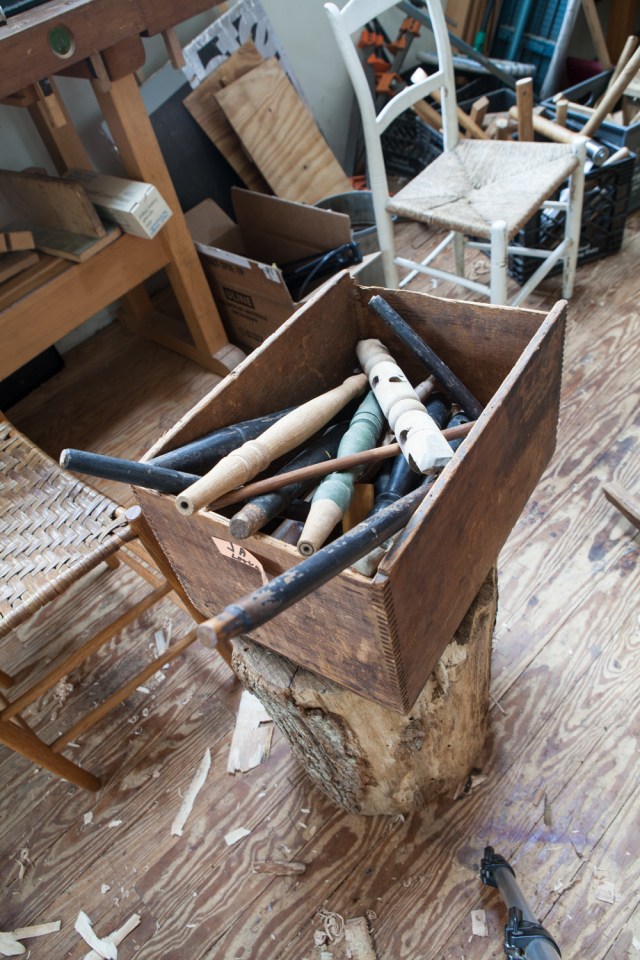
Shaker Chairs
Like many young people, Alexander and his wife fixed up an old house and Alexander starts reading English books on traditional trade, including chairmaking. She fixes up a fishing boat (which later became a pond for storing wet wood for chairmaking), starts making stools and decides to make some chairs.
“I called a firewood man and said I want a hickory log so long and so straight,” Alexander says. Later on, “I hear a great sound at the back. He’s dropping off hickory logs. Don’t ask me how I broke those down to get them on the lathe. But it’s time to make a chair. I got those legs up on the lathe, and the lathe was jumping across the room.
“When the rough, split spindle finally turned round, 6’-long sopping-wet strands of hickory traveled up the gouge and hung themselves up on my right ear. I said, ‘I will never go to the lumberyard again.’ ”
And she never has.
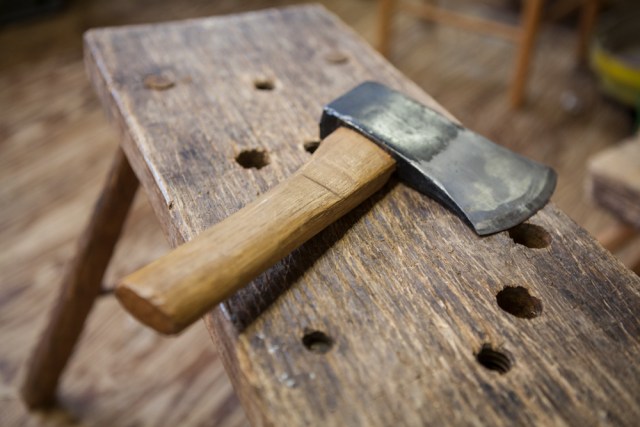
Alexander and Joyce are fascinated by the Shakers. They make several trips to the Sabbathday Lake Shaker community, where Sister Mildred there becomes Joyce’s “spiritual guide.” Alexander decides to make a Shaker chair with a one-slat back.
“So I made some very clunky Shaker chairs with one slat and we used fake twisted paper (instead of rush or tape for the woven seat),” she says.
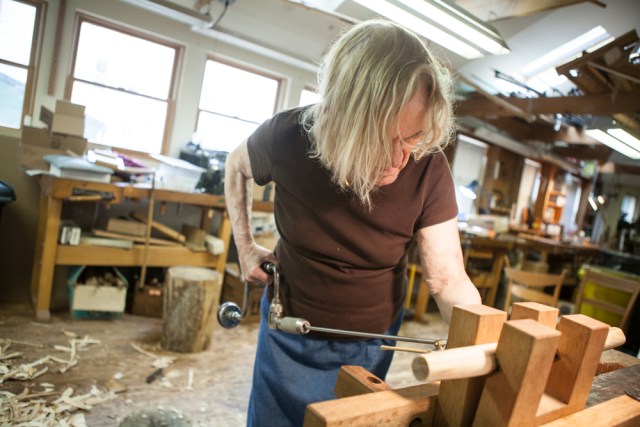
In the meantime, Alexander joins the Early American Industries Association and meets Charles Hummel, the author of the book “With Hammer in Hand” (University Press of Virginia) and a curator at Winterthur.
With Hummel’s guidance, Alexander becomes an expert on antique chairs made by the Dominy family on Long Island, including one interesting chair in the study collection that could be disassembled when the humidity is low (she was permitted by the museum to disassemble the chair, by the way).
All of this leads Alexander to experiment with wet wood. To test theory after theory on joinery, moisture content and how wood behaves. Some of the chairs work fine. Some do not. At some point Alexander decides to write a book about her chairs and travels to New England in 1977 at the suggestion of fellow craftsman Richard Starr. Alexander says she and Starr visited John Kelsey, the editor of Fine Woodworking magazine, at his home with a draft of the manuscript for “Make a Chair from a Tree” (Alexander says she “just happened to have the draft in hand”). Kelsey stayed up the night to read the draft.
“Kelsey read the draft overnight and hired me in the morning,” Alexander says. “Kelsey also hired Bruce Hoadley to read the text. Hoadley advised Kelsey, and I listened to every word.”
Make a Chair From a Tree
“Make a Chair from a Tree” was the first woodworking book published by Taunton Press, Alexander says. At the time, the new magazine was just getting started working on books with Tage Frid and Bruce Hoadley, but Alexander was ready to go, says Kelsey, the then-editor.
“I remember thinking it was a perfect topic for the then-new Fine Woodworking audience, the concept was so elemental and fundamental, and so unlike anything then in print; it cut to the very core of what we were trying to do,” Kelsey says. “At the same time, the publisher, Paul Roman, had a more conventional view of our woody audience and judged it a risky proposition, perhaps a very hard sell. But we didn’t know, and it wasn’t going to be a huge investment of time or money, so we agreed to jump and find out.”
Kelsey and Starr traveled to Baltimore to work on the book with Alexander. Roman, the magazine’s publisher, shot the photos, Alexander says. The team worked to shape up the manuscript for its 1978 release. (Upon reflecting on the process, Alexander says she was “eternally grateful” for Starr’s help in particular.)
Meanwhile, Alexander continued to investigate on the chair technology and offered huge changes right up until the moment the book went to press – an unconventional way to make a book (or a chair for that matter).
One of the biggest last-minute changes was in how the parts were shaped. Alexander had been using a lathe to turn the components. But right before an Early American Industries meeting, Alexander was told she couldn’t use a lathe because it was too dangerous to the audience if something flew loose.
“I was down in the shop kicking stuff. I didn’t know what to do,” Alexander says. “Joyce gives me a cup of tea. She says, ‘You shave stuff eight-sided to put it on the lathe don’t you? Well keep going.’ ” Alexander went to the meeting and returned with a shaved chair.
Alexander switched to shaving the chairs instead of turning them. Kelsey then had to re-write the book, Alexander says.
“But we wanted a great little gem of a book and we didn’t want to be issuing revised editions within a year or two, so we rode the pony right to the ground,” Kelsey says.
“Make a Chair from a Tree” hit the market in 1978 with multiple advertisements in the magazine that were supported by articles from Drew Langsner and Alexander on green-wood techniques and technology. Kelsey says the book – 128 pages in an unusual 9” x 9” format – was a hard sell with most readers. But it was aimed right between the eyes of Peter Follansbee in Massachusetts.

“I was in my shop with a table saw and a drill press,” Follansbee says. “I think I was trying to make a bookcase. With those two articles I was just captured.”
Follansbee bought the book, started making chairs and in 1980 saw that Alexander was teaching a class at Country Workshops in North Carolina. Though Follansbee didn’t drive a car, he found a way to the school via an airplane, two buses and 25 miles of hitchhiking and walking. In time he became a regular at the school, and he and Alexander became friends through a love for green woodworking and a twisted sense of humor.
At the time, Alexander was exploring theories of how case pieces had been made using 17th-century green-woodworking techniques such as riving stock, and joinery techniques including drawboring that Benno Foreman, Robert Trent and Hummel at Winterthur were also researching. They helped open the door for Alexander’s research in giving her access to old pieces.
“He (Alexander) was looking for someone to test his theories,” Follansbee says. “He was practicing law and didn’t have time to build a complex piece. So I ended up saying, ‘I’ll go fart around with some of this.’ I had given up all my power tools. I had found a good-sized log. He (drew out) the joint on the junk mail on his table. I rose to the bait.”
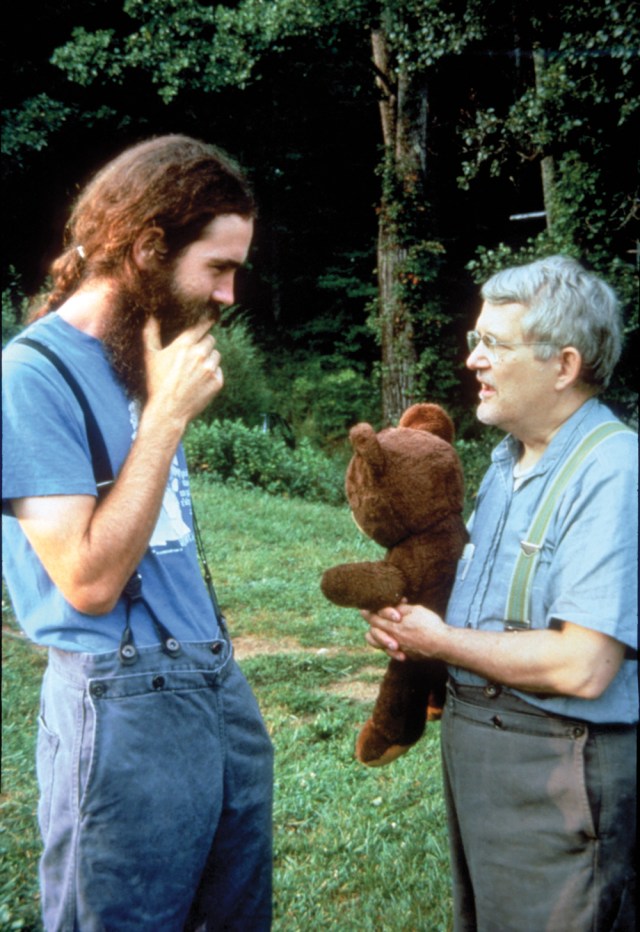
That moment launched a long correspondence between Alexander and Follansbee, who would swap letters and photographs from their homes in Baltimore and Massachusetts. And eventually the letters led to the book “Make a Joint Stool from a Tree” (Lost Art Press), which explored 17th-century joinery and stock preparation.
This dunking into the world of green woodworking led Follansbee to become the joiner at Plimoth Plantation for more than 20 years, where he continued to explore 17th-century furniture.
“All in all, (Alexander) has been a huge part of my life,” Follansbee says.
Country Workshops
Follansbee was similar to many woodworkers who discovered green woodworking through “Make a Chair from a Tree.” They started with the book and ended up studying it deeply under the direct tutelage of Alexander at Country Workshops in rural North Carolina.
Drew and Louise Langsner founded Country Workshops in 1978 shortly after the couple had written a book titled “Handmade,” and Drew had just finished a book called “Country Woodcraft.”
“Almost as soon as that book comes out I get a letter from John who was very excited about the book,” Drew says. The two resolve to meet when Drew traveled to New England to speak at the Woodcraft Supply store.
During the visit, Drew invited Alexander to Country Workshops to teach a class on building a simple stool. That class soon evolved into a class on building a simple chair with one slat and finally the chair that appeared on the cover of “Make a Chair from a Tree.”
And Country Workshops became the flash point for woodworkers who wanted to explore traditional woodworking in a deep way that was rooted both in tradition and science.
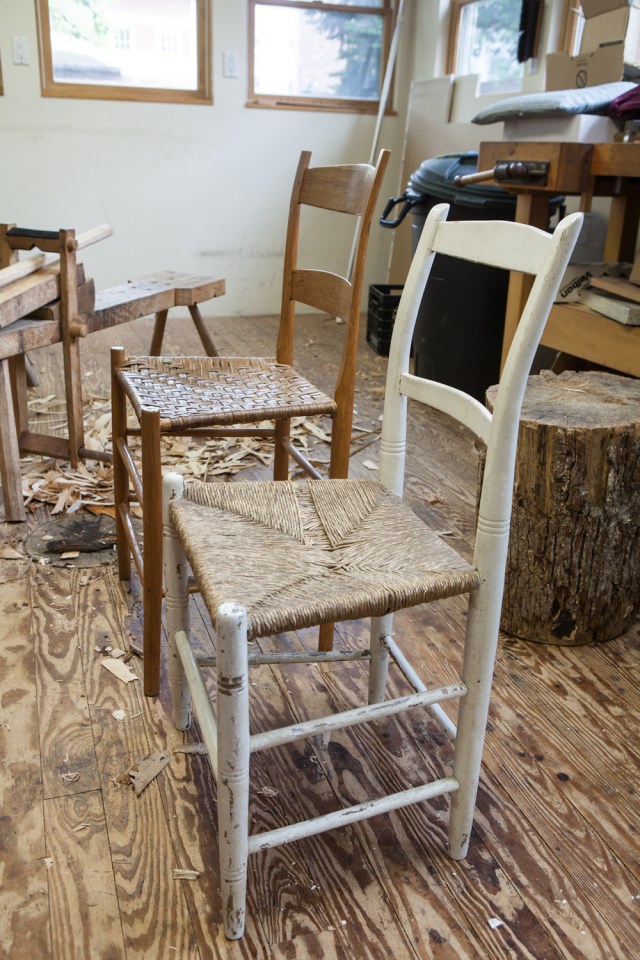
Even today, people come from all over the world to study chairmaking at Country Workshops, many of them inspired by Alexander’s incredibly lightweight chair.
“In fact, some students (from Australia) were here last week were sent here by Jennie,” Louise says. “She is always encouraging people. I think that is a special thing about her – generosity.
“Woodworking is such a special part of her life and she wants to share.”
So what is it about Alexander’s chair that still continues to inspire people to build it? Drew says it’s interesting to him because Alexander’s chair is essentially a historical ladderback design that appears over and over.
But Alexander was not content to just build a reproduction and call it done. Alexander, a jazz singer, likes to explore variations on a theme.
“The Appalachian chairs were a little clunky,” Drew says. “John’s are really slender and elegant. How he came up with that look I don’t know. But the look changed everything. He refined the chair just perfectly.”
In fact, Drew says he’s about to start making a set of them for their house and daughter. And they were going to be exactly the same chair shown on the cover of “Make a Chair from a Tree.”
“It’s like Alexander took an old piece of music,” Drew says. “She’s following all the 300-year-old notes and making it new again.”
— Christopher Schwarz